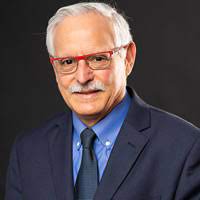
Bernard Frischer is a leading scholar in the application of digital technologies to humanities research and education. Frischer has overseen many significant projects, including virtual recreations of sites such as the city of Rome in the time of the emperor Constantine the Great. The works of Frischer and his institute have received international acclaim and have been featured on the Discovery Channel, the RAI, German Public Radio, the BBC, in Newsweek, Scientific American, Business Week, Computer Graphics World, Forbes, the New York Times and many other magazines and newspapers around the world (see www.frischerconsulting.com/rome_reborn/press.php#media_coverage). His Rome model was featured at SIGGRAPH 2008, held in August 2008 in the Los Angeles Convention Center.
Professor Frischer is the author or co-author of six printed books, three e-books and many articles on virtual heritage and on the Classical world and its survival. He is also the editor-in-chief of the Digital Roman Forum web site (http://dlib.etc.ucla.edu/projects/Forum ), which was honored in 2008 by being included on the list of EDSITEMENT, the list of educationally-approved websites selected by the National Endowment for the Humanities. He taught Classics at UCLA from 1976 to 2004. Since then he has been Professor of Art History and Classics at the University of Virginia, where he is also the Director of The Virtual World Heritage Laboratory. He has been a guest professor at the University of Pennsylvania (1993), the University of Bologna (1994), Beijing Normal University (2009), and held the post of Professor-in-Charge of the Intercollegiate Center for Classical Studies in Rome (2001-02). He was a Senior Fellow in the Zukunftskolleg of the University of Konstanz during the 2010-11 academic year.
Frischer’s research career reflects his interest in interdisciplinary approaches, and has included studies in the literature, philosophy, art history and archeology of Greece and Rome. He is the author of several books, including Shifting Paradigms: New Approaches to Horace’s Ars Poetica, and The Sculpted Word: Epicureanism and Philosophical Recruitment. Frischer directed the excavations ofHorace’s Villa, a project sponsored by the American Academy in Rome and the Archeological Superintendency for Lazio of the Italian Ministry of Culture. The findings of this work were the subject of a two-volume report, Horace’s Villa Project 1997-2003 (Oxford: 2007), of which Frischer was editor-in-chief. He is founder and director of the Rome Reborn Project, an international initiative based at the University of Virginia, UCLA, and the Politecnico di Milano (for details, see www.romereborn.virginia.edu). The goal of the project is to create 3D digital models illustrating the urban development of ancient Rome from the first settlements in the late Bronze Age (ca. 1,000 BCE) to the early Middle Ages (ca. 550 CE). Rome Reborn 1.0 was premiered by Rome’s Mayor Walter Veltroni at an international press conference Frischer organized in June, 2007. It was published in Google Earth in 2008. Rome Reborn 2.0 was the featured project at SIGGRAPH 2008, the leading industry and scientific conference held in the field of Computer Graphics. His current research includes a new 3D digital model of Hadrian’s Villa (Tivoli, Italy). He is also principal investigator of SAVE (Serving and Archiving Virtual Environments), a project sponsored by the National Science Foundation to create a database of 3D digital models of cultural heritage sites, monuments, and landscapes. Over the course of his career, Frischer has raised over $5 million in support of his various research projects.
Frischer received his B.A. (Wesleyan University, 1971) and Ph.D. (Heidelberg, 1975) degrees summa cum laude and is a member of Phi Beta Kappa (1970), a Fellow of the Michigan Society of Fellows, a Fellow (1974-76) and Resident (1996) of the American Academy in Rome, and he has won research fellowships from the American Council of Learned Societies (1981, 1996) and the Center for Advanced Study in the Visual Arts (1997). From 1996 to 2003 he directed the excavations of Horace’s Villa sponsored by the American Academy in Rome, and from 1996 to 2004 he was founding director of the UCLA Cultural Virtual Reality Laboratory. The lab was one of the first in the world to use 3D computer modeling to reconstruct cultural heritage sites. In 2005 Bernard Frischer was given the Pioneer Award of the International Society on Virtual Systems and Multimedia. In 2009, he was the recipient of the Tartessus Prize of the Spanish Society for Virtual Archaeology. In 2010 he won a Senior Prize Fellowship from the Zukunftskolleg at the University of Konstanz.